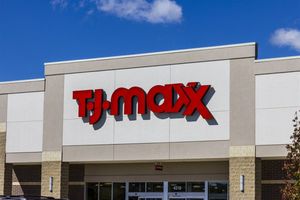– OXLUMO Demonstrated Improvements in Nephrocalcinosis in Patients with Primary Hyperoxaluria Type 1 After 12 Months of Treatment –
Alnylam Pharmaceuticals, Inc. (Nasdaq: ALNY), the leading RNAi therapeutics company, announced today positive early results on clinical outcome measures from the 12-month analysis of ILLUMINATE-A Phase 3 study of OXLUMO® (lumasiran), an RNAi therapeutic targeting hydroxyacid oxidase 1 (HAO1) – the gene encoding glycolate oxidase (GO) – for the treatment of primary hyperoxaluria type 1 (PH1). These data were presented at the American Society of Pediatric Nephrology (ASPN)/Pediatric Academic Societies (PAS) virtual meeting being held on April 30–May 4, 2021.
As previously reported, treatment with OXLUMO significantly reduced urinary oxalate levels in infants1, children1,2 and adults2 with PH1 in the ILLUMINATE-A and ILLUMINATE-B studies. OXLUMO also demonstrated an acceptable safety profile across age groups, with injection site reactions as the most common drug-related adverse reaction. New results from ILLUMINATE-A showed that treatment with OXLUMO for 12 months was associated with evidence of improvements in nephrocalcinosis in one or both kidneys, relative to baseline.
“Nephrocalcinosis is a key indicator of disease severity in PH1,” said Jeffrey M. Saland, M.D., Professor and Chief, Pediatric Nephrology and Hypertension, Jack and Lucy Clark Department of Pediatrics, Mount Sinai Kravis Children’s Hospital, New York City and Investigator on the ILLUMINATE-A trial. “Thus, unilateral and bilateral improvements in nephrocalcinosis in some patients treated with OXLUMO are a welcome observation and are consistent with our expectation of the potential clinical impact of a sustained and substantial reduction in urinary oxalate levels.”
“We are thrilled to be presenting positive nephrocalcinosis data from our ILLUMINATE-A study,” said Pushkal Garg, M.D., Chief Medical Officer at Alnylam. “These early data provide emerging evidence demonstrating improvements in nephrocalcinosis in some patients. Notably, the majority of patients with baseline nephrocalcinosis and available ultrasounds experienced improvement, often in both kidneys, after 12 months of treatment – an encouraging sign indicating the potential of OXLUMO to improve renal outcome measures in patients with PH1. We look forward to reporting additional data later in the year.”
Results
Among 24 patients in ILLUMINATE-A who had been treated with lumasiran for 12 months and had valid renal ultrasounds at baseline, 46 percent (11/24) of patients experienced improvement in nephrocalcinosis grade relative to baseline, 17 percent (4/24) remained stable, and 13 percent (3/24) experienced worsening; 25 percent (6/24) did not have ultrasounds available at 12 months. Of 14 patients with baseline nephrocalcinosis and available ultrasounds, 79 percent (11/14) showed improvement relative to baseline, and of those who improved, 73 percent (8/11) improved in both kidneys. Additional data were presented regarding effects on estimated glomerular filtration rate (eGFR) and kidney stone events.
To view the full results presented at the virtual ASPN congress, please visit www.alnylam.com/capella.
IMPORTANT SAFETY INFORMATION
Adverse Reactions
The most common adverse reaction that occurred in patients treated with OXLUMO was injection site reaction (38%). Symptoms included erythema, pain, pruritus, and swelling.
Pregnancy and Lactation
No data are available on the use of OXLUMO in pregnant women. No data are available on the presence of OXLUMO in human milk or its effects on breastfed infants or milk production. Consider the developmental and health benefits of breastfeeding along with the mother’s clinical need for OXLUMO and any potential adverse effects on the breastfed child from OXLUMO or the underlying maternal condition.
For additional information about OXLUMO, please see the full Prescribing Information.
About OXLUMO® (lumasiran)
OXLUMO is an RNAi therapeutic targeting hydroxyacid oxidase 1 (HAO1) for the treatment of primary hyperoxaluria type 1 (PH1) to lower urinary oxalate levels in pediatric and adult patients. HAO1 encodes glycolate oxidase (GO), an enzyme upstream of the disease-causing defect in PH1. OXLUMO works by degrading HAO1 messenger RNA and reducing the synthesis of GO, which inhibits hepatic production of oxalate – the toxic metabolite responsible for the clinical manifestations of PH1. In the pivotal ILLUMINATE-A study, OXLUMO was shown to significantly reduce levels of urinary oxalate relative to placebo, with the majority of patients reaching normal or near-normal levels. Injection site reactions (ISRs) were the most common drug-related adverse reaction. In the ILLUMINATE-B pediatric Phase 3 study, OXLUMO demonstrated an efficacy and safety profile consistent with that observed in ILLUMINATE-A. OXLUMO utilizes Alnylam’s Enhanced Stabilization Chemistry (ESC)-GalNAc conjugate technology designed to increase potency and durability. OXLUMO is administered via subcutaneous injection once monthly for three months, then once quarterly thereafter at a dose based on actual body weight. For patients who weigh less than 10 kg, ongoing dosing remains monthly. OXLUMO should be administered by a healthcare professional. For more information about OXLUMO, visit OXLUMO.com.
About ILLUMINATE-A Phase 3 Study
ILLUMINATE-A (NCT03681184) is a six-month randomized, double-blind, placebo-controlled, global, multicenter Phase 3 study (with a 54-month extension period) to evaluate the efficacy and safety of lumasiran in 39 patients, age six and older, with a documented diagnosis of PH1. Patients were randomized 2:1 to receive three monthly doses of lumasiran or placebo followed by quarterly doses at 3 mg/kg. The primary endpoint was the percent change in 24-hour urinary oxalate excretion from baseline to the average of months 3 to 6 in the patients treated with lumasiran as compared to placebo. Treatment arms were stratified at randomization based upon mean 24-hour urinary oxalate during screening (≤1.7 or >1.7 mmol/24hr/1.73m2). Key secondary and exploratory endpoints were designed to evaluate additional measures of urinary oxalate, plasma oxalate, estimated glomerular filtration rate (eGFR), nephrocalcinosis, renal stone events, safety and tolerability.
About ILLUMINATE-B Phase 3 Study
ILLUMINATE-B (NCT03905694) is a single arm, open-label, multicenter Phase 3 trial to evaluate the efficacy and safety of lumasiran in 18 patients with PH1 under the age of six (range: 3-72 months), with an estimated glomerular filtration rate (eGFR) of greater than 45 mL/min/1.73 m2 or normal serum creatinine if less than 12 months old, at nine study sites, in five countries around the world. Lumasiran was administered according to a weight-based dosing regimen. The primary efficacy endpoint of the study was the percent change from baseline to Month 6 in spot urinary oxalate:creatinine ratio averaged across Months 3 to 6. At six months, relative to baseline, lumasiran demonstrated a clinically meaningful reduction in spot urinary oxalate:creatinine ratio. Reduction of urinary oxalate relative to baseline was consistent across all three body weight categories (less than 10 kg; 10 kg to less than 20 kg, and 20 kg or higher).
About Primary Hyperoxaluria Type 1 (PH1)
PH1 is an ultra-rare genetic disease that affects an estimated one to three individuals per million in the United States and Europe. PH1 is characterized by oxalate overproduction in the liver. The excess oxalate results in the deposition of calcium oxalate crystals in the kidneys and urinary tract and can lead to the formation of painful and recurrent kidney stones and nephrocalcinosis. Renal damage is caused by a combination of tubular toxicity from oxalate, calcium oxalate deposition in the kidneys, and urinary obstruction by calcium oxalate stones. PH1 is associated with a progressive decline in kidney function, which exacerbates the disease as the excess oxalate can no longer be effectively excreted, resulting in subsequent accumulation and deposition of oxalate in bones, eyes, skin, and heart, leading to severe illness and death. Management options to date were limited to hyperhydration, crystallization inhibitors and, in a minority of patients with a specific genotype, pyridoxine (vitamin B6). These measures do not adequately address oxalate overproduction but instead help to delay inevitable progression to kidney failure and the need for intensive dialysis as a bridge to a dual or sequential liver/kidney transplant. Liver transplantation is the only intervention that addresses the underlying metabolic defect, but is associated with high morbidity and mortality, and life-long immunosuppression. Until today, there were no approved pharmaceutical therapies for PH1.
About RNAi
RNAi (RNA interference) is a natural cellular process of gene silencing that represents one of the most promising and rapidly advancing frontiers in biology and drug development today. Its discovery has been heralded as "a major scientific breakthrough that happens once every decade or so," and was recognized with the award of the 2006 Nobel Prize for Physiology or Medicine. By harnessing the natural biological process of RNAi occurring in our cells, a new class of medicines, known as RNAi therapeutics, is now a reality. Small interfering RNA (siRNA), the molecules that mediate RNAi and comprise Alnylam's RNAi therapeutic platform, function upstream of today’s medicines by potently silencing messenger RNA (mRNA) – the genetic precursors – that encode for disease-causing or disease pathway proteins, thus preventing them from being made. This is a revolutionary approach with the potential to transform the care of patients with genetic and other diseases.
About Alnylam Pharmaceuticals
Alnylam (Nasdaq: ALNY) is leading the translation of RNA interference (RNAi) into a whole new class of innovative medicines with the potential to transform the lives of people afflicted with rare genetic, cardio-metabolic, hepatic infectious, and central nervous system (CNS)/ocular diseases. Based on Nobel Prize-winning science, RNAi therapeutics represent a powerful, clinically validated approach for the treatment of a wide range of severe and debilitating diseases. Founded in 2002, Alnylam is delivering on a bold vision to turn scientific possibility into reality, with a robust RNAi therapeutics platform. Alnylam’s commercial RNAi therapeutic products are ONPATTRO® (patisiran), GIVLAARI® (givosiran), OXLUMO® (lumasiran), and Leqvio® (inclisiran) being developed and commercialized by Alnylam’s partner Novartis. Alnylam has a deep pipeline of investigational medicines, including six product candidates that are in late-stage development. Alnylam is executing on its “Alnylam P5x25” strategy to deliver transformative medicines in both rare and common diseases benefiting patients around the world through sustainable innovation and exceptional financial performance, resulting in a leading biotech profile. Alnylam is headquartered in Cambridge, MA. For more information about our people, science and pipeline, please visit www.alnylam.com and engage with us on Twitter at @Alnylam, on LinkedIn, or on Instagram.
Alnylam Forward Looking Statements
Various statements in this release concerning Alnylam's future expectations, plans and prospects, including, without limitation, Alnylam’s views with respect to the safety and efficacy of OXLUMO as demonstrated after 12-months of treatment in the ILLUMINATE-A Phase 3 study and expectations regarding the timing for reporting additional data on clinical outcomes measures, the potential clinical impact of treatment with OXLUMO as demonstrated by unilateral and bilateral improvements in nephrocalcinosis in some patients, and Alnylam’s ability to achieve its “Alnylam P5x25” strategy, constitute forward-looking statements for the purposes of the safe harbor provisions under The Private Securities Litigation Reform Act of 1995. Actual results and future plans may differ materially from those indicated by these forward-looking statements as a result of various important risks, uncertainties and other factors, including, without limitation: the direct or indirect impact of the COVID-19 global pandemic or any future pandemic on Alnylam’s business, results of operations and financial condition and the effectiveness or timeliness of Alnylam’s efforts to mitigate the impact of the pandemic; Alnylam's ability to discover and develop novel drug candidates and delivery approaches and successfully demonstrate the efficacy and safety of its product candidates; the pre-clinical and clinical results for its product candidates; actions or advice of regulatory agencies and Alnylam’s ability to obtain and maintain regulatory approval for its product candidates, as well as favorable pricing and reimbursement; successfully launching, marketing and selling its approved products globally; delays, interruptions or failures in the manufacture and supply of its product candidates or its marketed products; obtaining, maintaining and protecting intellectual property; Alnylam’s ability to successfully expand the indication for ONPATTRO in the future; Alnylam's ability to manage its growth and operating expenses through disciplined investment in operations and its ability to achieve a self-sustainable financial profile in the future without the need for future equity financing; Alnylam’s ability to maintain strategic business collaborations; Alnylam's dependence on third parties for the development and commercialization of certain products, including Novartis, Sanofi, Regeneron and Vir; the outcome of litigation; the potential impact of current and the risk of future government investigations; and unexpected expenditures; as well as those risks more fully discussed in the “Risk Factors” filed with Alnylam's most recent Quarterly Report on Form 10-Q filed with the Securities and Exchange Commission (SEC) and in its other SEC filings. In addition, any forward-looking statements represent Alnylam's views only as of today and should not be relied upon as representing its views as of any subsequent date. Alnylam explicitly disclaims any obligation, except to the extent required by law, to update any forward-looking statements.
This release discusses the use of a previously approved RNAi therapeutic in continued development and is not intended to convey conclusions about efficacy or safety as to these uses. There is no guarantee that the data described in this release will result in expanded use of this commercial product, will successfully complete clinical development or will gain health authority approval.
Footnotes:
1See About ILLUMINATE-B for patient population and study endpoints
2See About ILLUMINATE-A for patient population and study endpoints
View source version on businesswire.com: https://www.businesswire.com/news/home/20210503005235/en/
Contacts
Alnylam Pharmaceuticals, Inc.
Christine Regan Lindenboom
(Investors and Media)
+1-617-682-4340
Josh Brodsky
(Investors)
+1-617-551-8276





